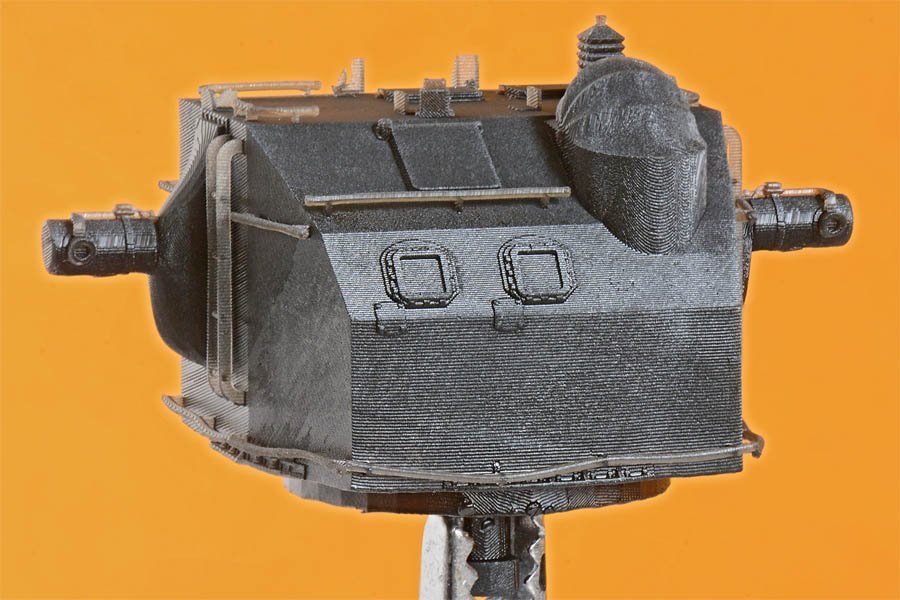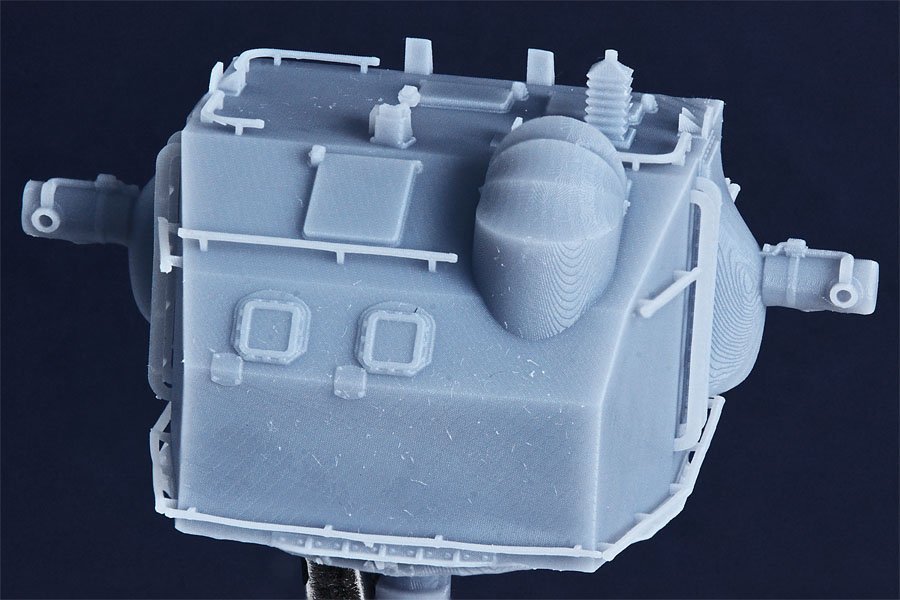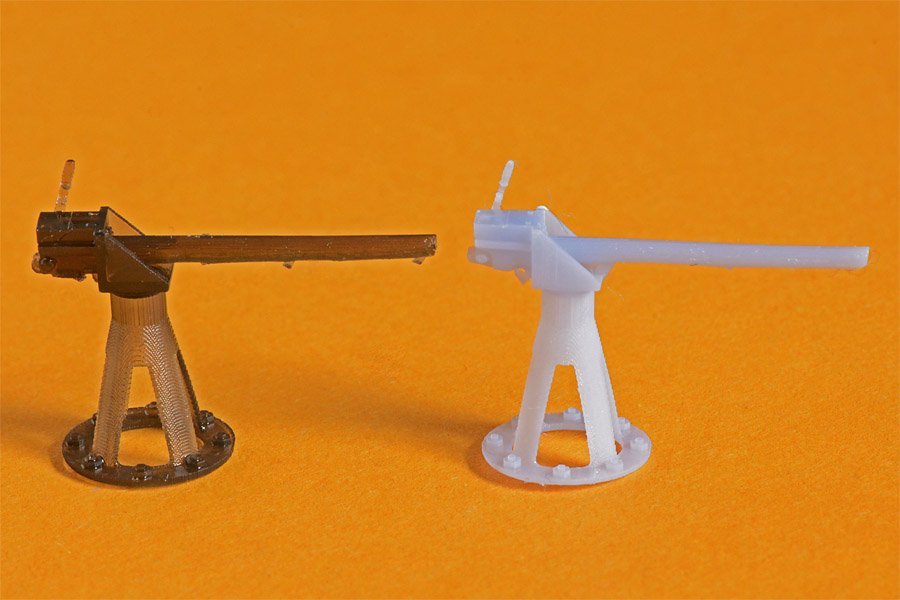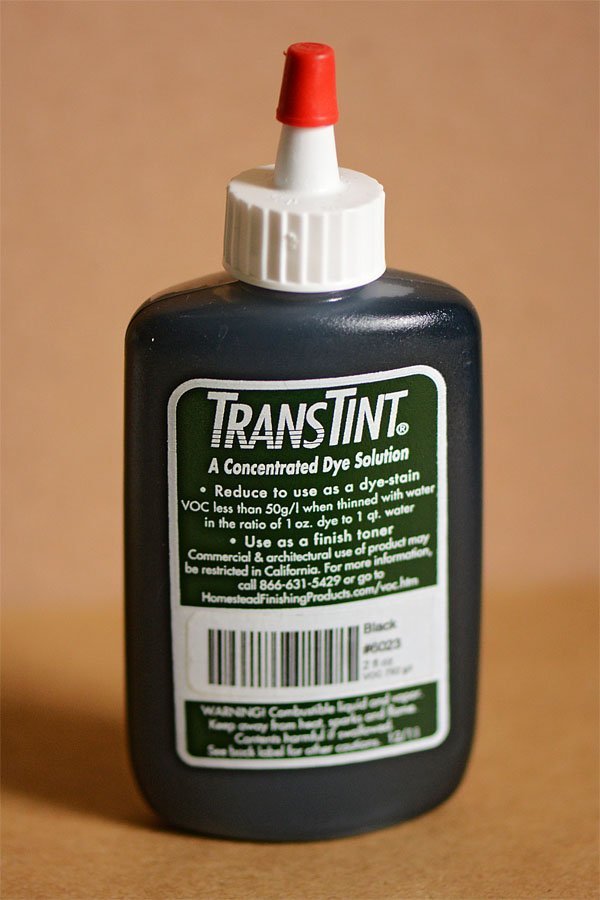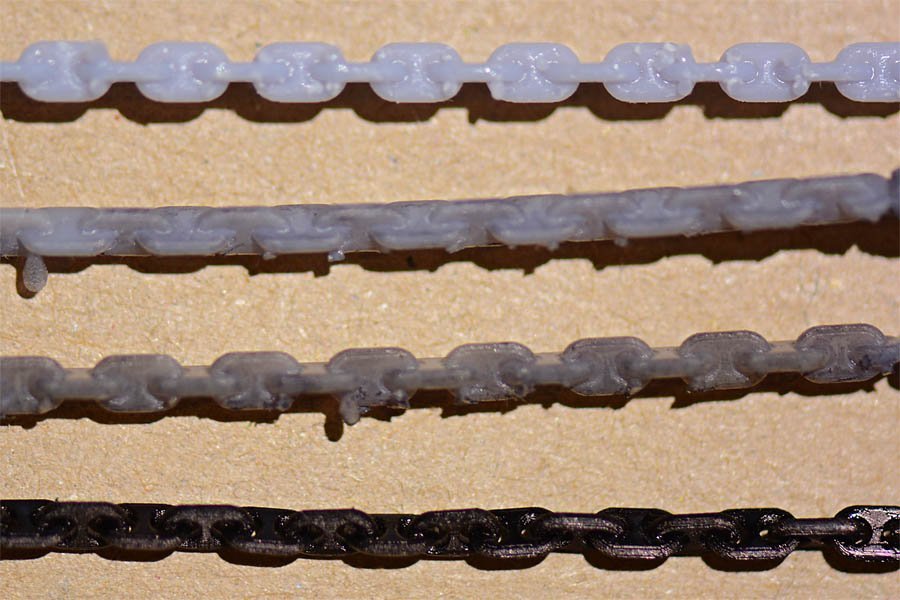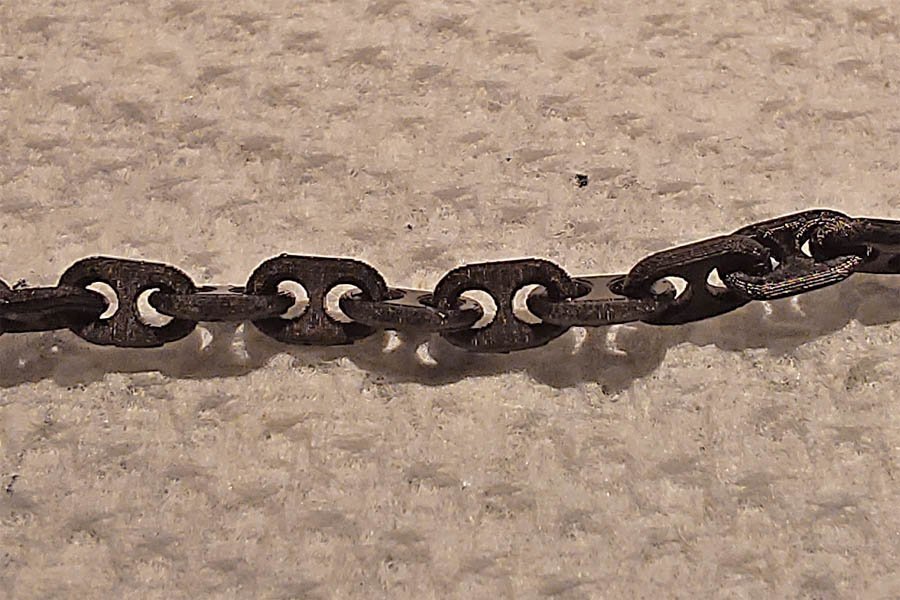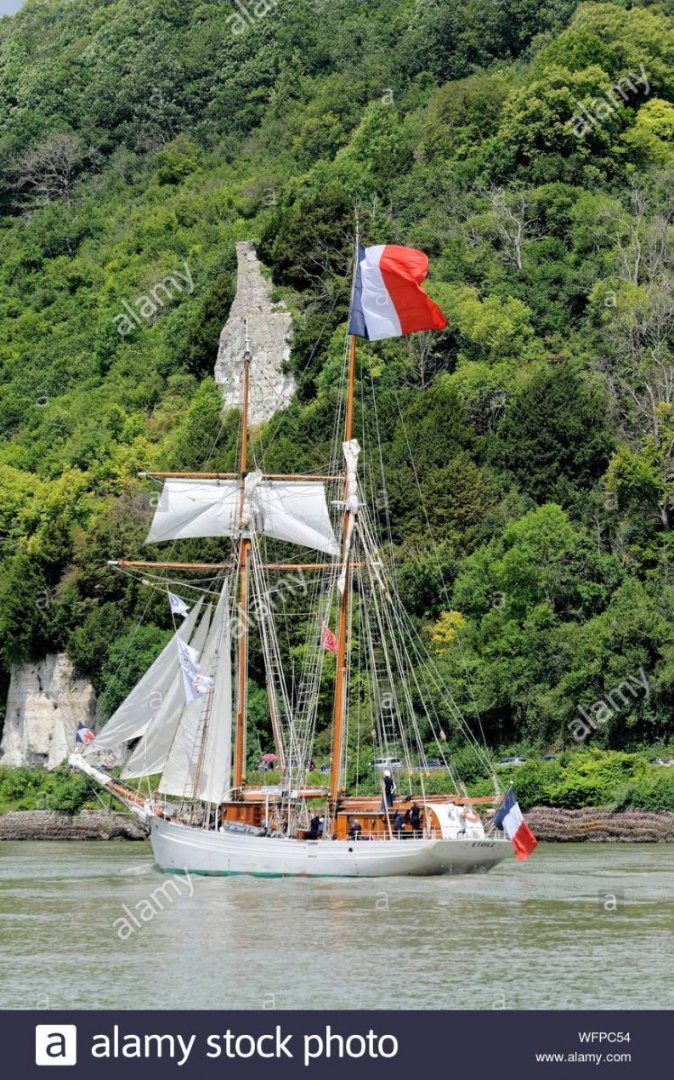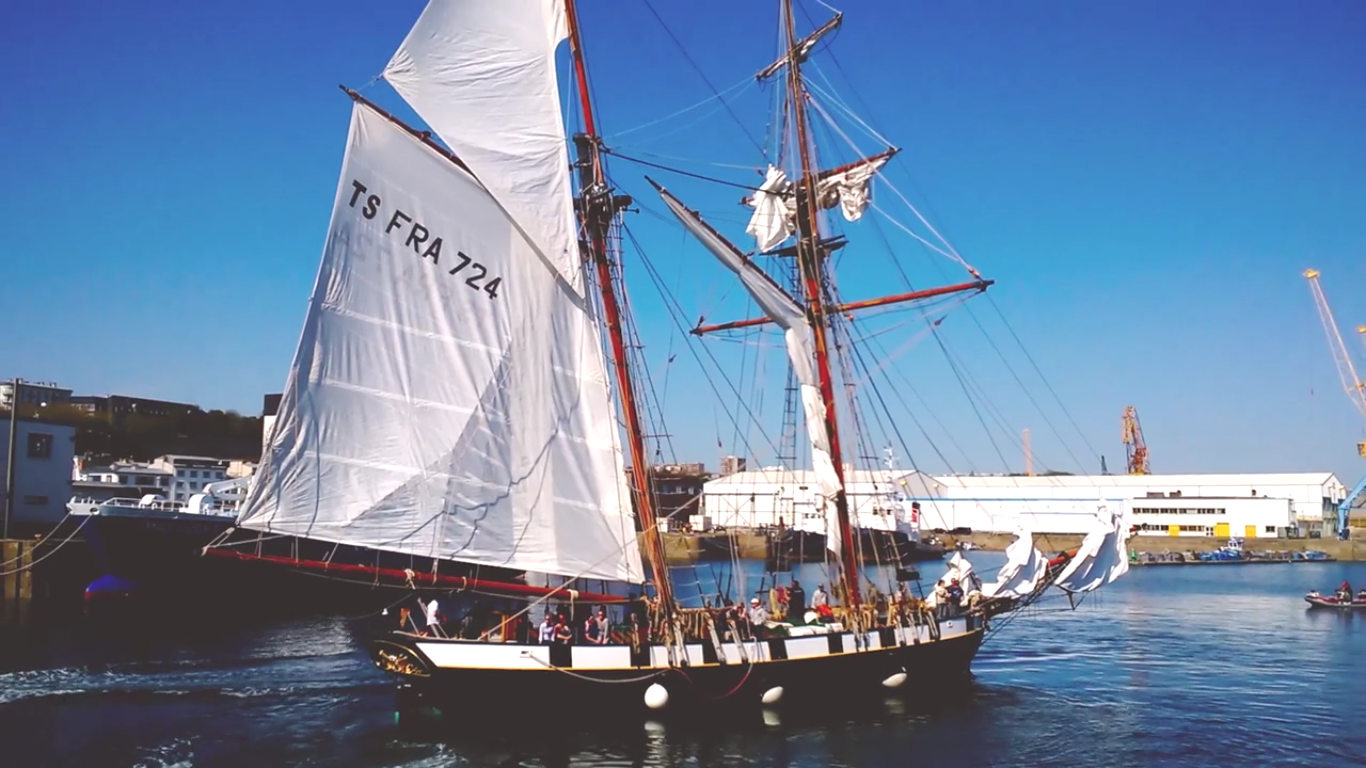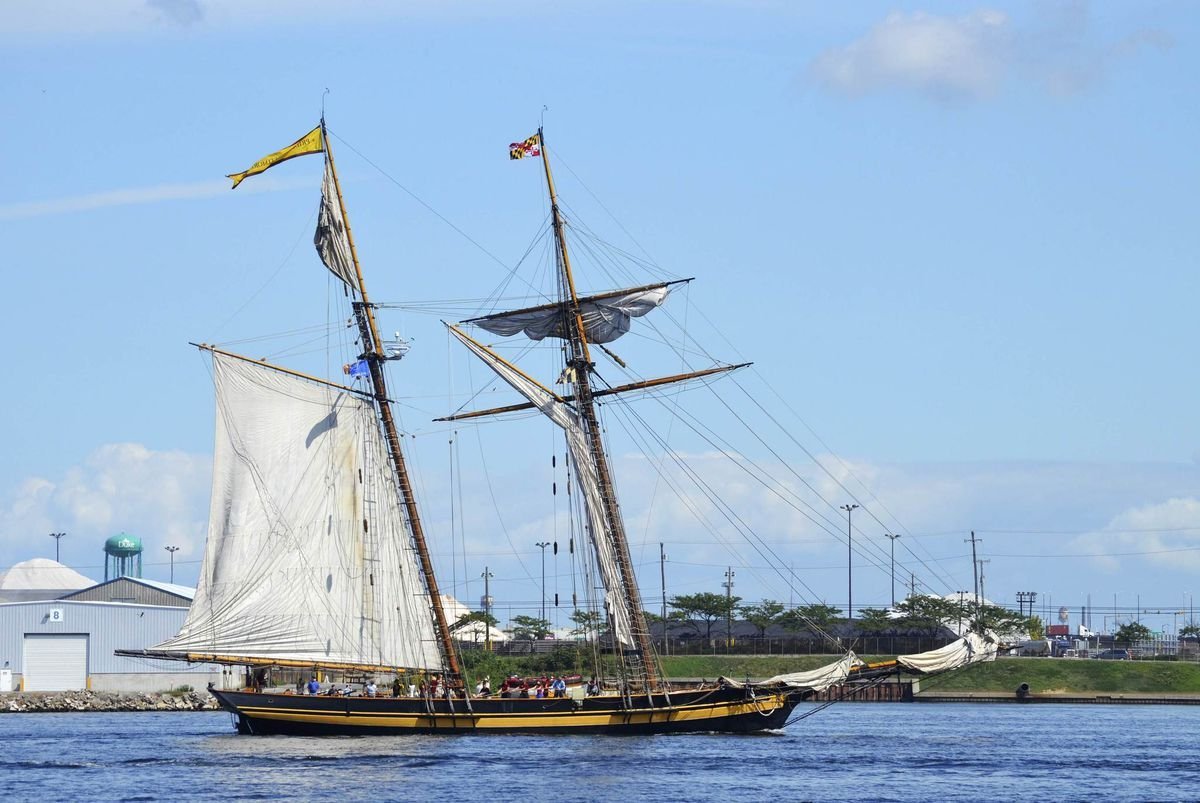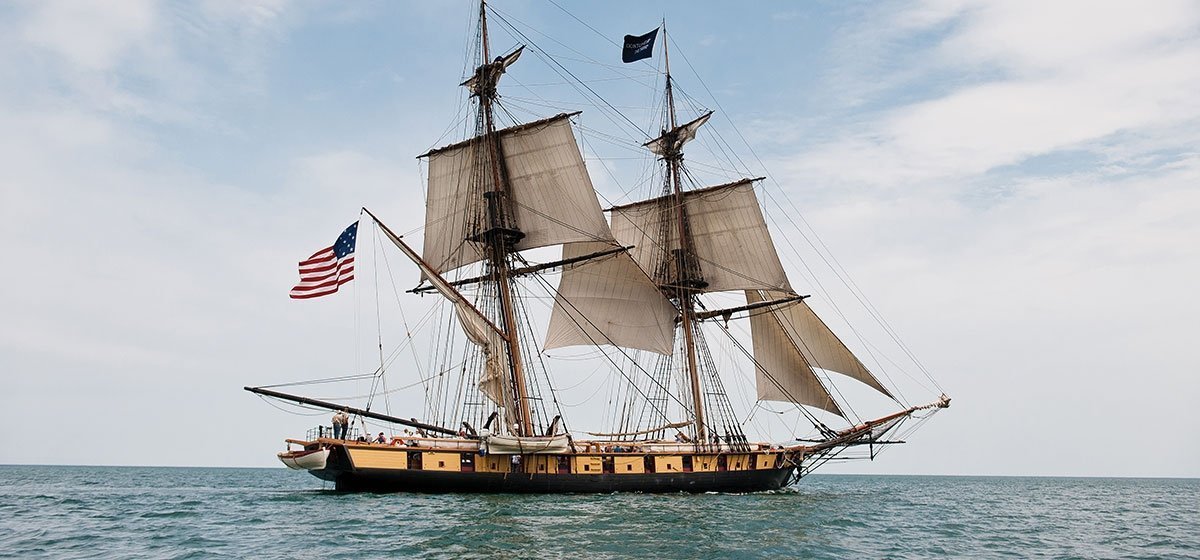-
Posts
2,406 -
Joined
-
Last visited
Content Type
Profiles
Forums
Gallery
Events
Everything posted by Dr PR
-
Another way to create complex curved railings like this is to build them up with many thin strips bent around a jig and glued together. The strip width is a bit larger than the railing vertical thickness. After the laminated strips are glued the railing can be sanded to the desired thickness. A real advantage of this method is that the railing is really tough and there is no "grain" for it to break along. The downside is that it is more work than just cutting a piece out of thin plywood.
-
Glomar, The major problem with sanding the hull planking smooth is sanding a hole through the planks. So you want to go slow and easy. This can be a problem if the edges of your planks do not fit together smoothly. Some kits do not have enough bulkheads - the gaps between bulkheads are so wide that the planks can flatten between bulkheads instead of following a smooth curve. Then when you start sanding to get a smooth curve on the hull you can sand through the planks near the bulkheads. You can avoid this problem by inserting extra bulkheads between the wide spaced kit parts, or by filling the gaps with balsa and sanding it to shape before adding the planking. I plank hulls before attaching the deck. This allows me to shine a light into the hull and look for thin spots in the planking. I can always put a layer of putty inside the planking if it is getting thin, and I like to coat the inside of the hull with thin epoxy to glue everything together firmly. This prevents seams from opening between planks in the future. The best way to avoid holes due to sanding is to bend and fit the planks carefully so the edge of a plank does not rise above the surface of the neighboring planks. Then you need very little sanding to get a smooth surface. There is an art to accomplishing this, and there are several planking tutorials on the forum.
-
Valeriy, Considering the materials and methods you are using, I think it will last a very long time. Hopefully it will be displayed in a museum some day - your work deserves it!
-
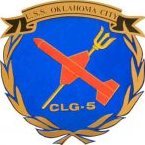
Rigging an anchor - mid 1700's to late 1700's
Dr PR replied to LyleK1's topic in Masting, rigging and sails
Of course if the ship is tied up to a dock the sails would be furled (unless they were drying) and the anchor would be stowed (not hanging from the cathead). But when anchoring a sailing ship some of the sails were flying in order to maneuver the ship and the anchor would be hanging from the cathead prior to dropping. DArcy Lever's "The Young Sea Officer's Sheet Anchor" describes the procedure for dropping and raising anchor. One of my complaints about the movie "Master and Commander," which I enjoy very much, is that in one scene they show the ship running mid ocean with the anchor dragging in the water! That would reduce the ship's speed, acting as a "sea anchor" although that is something entirely different. -

Rigging an anchor - mid 1700's to late 1700's
Dr PR replied to LyleK1's topic in Masting, rigging and sails
Darcy Lever's "Young Sea Officer's Sheet Anchor" (section 69) describes catting and fishing the anchor. This is a general description but probably represents the common method for handling the anchor on British and American vessels in the 19th century. The cat tackle (cathead sheaves, cat block and hook) are used to raise the anchor up under the cathead (this is "catting the anchor"). Then a stopper (rope) is used to secure the arms (top) end. One end of this stopper is either secured around the cathead ot reeved through a hole in the cathead with knots to prevent the rope from pulling through. The loose end of the stopper is run through the anchor hoop and then secured to a timberhead on the rail or a stout cleat attached to the cathead. After the stopper is secured the cat tackle can be removed from the anchor. The stopper supports the and of the anchor. However, it seems to be more common in ship models to leave the cat tackle attached to the anchor hoop. Even so, the tackle is not supporting the anchor and is slack. A separate fish tackle is used to raise the fluke end of the anchor. The fish tackle and boom are temporary rigs and are stowed after the anchor is raised, so they are not usually modeled. But the "fish hook" on the end of the fish tackle is hooked under the inner arm of the anchor and the tackle hauls the fluke end up to the rail (this is "fishing the anchor"). Then the shank painter (another stopper of rope or chain) is looped around the anchor shaft and the crown (where the fluke arms meet the anchor shaft). One end of the shank painter is secured to a timber head on the rail (or a stout cleat on smaller ships). The running end is hauled up and secured to another timber head or cleat. Then the fish tackle is removed. The inner fluke arm was often brought up and over the rail, while the stock (wooden arms at the top) are pulled flat against the hull. When the anchor is stowed this way the head is supported by the stopper on the cathead and the fluke end is supported by the shank painter. On some ships the anchor cable was removed from the anchor hoop and stowed below but most models show the cable still attached. Dropping the anchor was more or less the opposite procedure. The anchor was suspended below the cathead by the stopper, and the anchor was dropped by releasing the end of the stopper that was attached to the cleat or timberhead. -
Webster's "Third New International Dictionary:" bellerophon: bel'-ler-o-phon (emphasis on the first syllable). Mythological creature who slew the Chimera with the help of Pegasus. I first encountered the name in "Forbidden Planet." Dr. Morpheus' ship was the Bellerophon. If I recall correctly, Walter Pidgeon pronounced it with a bit more accent on the second syllable, and since Morpheus was a philologist (someone who studies languages) who is to question?
-
I think Rob and Henry are correct. Lines that take a great strain, such as sheets and lifts would not be run through fairleads on the stays. I believe Underhill actually says it was common for buntlines and clewlines to be belayed to the same pin. These lines normally have no strain on them and they are always used together. He also mentions that these lines from the same sail may run through holes in the same fairlead on a stay. Sometimes braces on topsail schooners are lead through fairleads on stays in order to route them away from gaffs that must be free to swing outboard.
-
As far as I can tell there is no record of a schooner named "Albatros" so whatever kit you get will probably not be an accurate representation of a real ship. If you want a kit with no guesswork, get a plastic model. Some model companies are creating very good documentation, but this is the exception and not typical of most models. Get the instructions on line if you can and see what you are getting into. I am building the 1980s version of the Mantua Albatros "Goleta typica de Baltimora." The plans are pretty good, but not exceptionally detailed, and parts of the rigging are hard to follow. But the instructions are one page and say "put the parts together." It does appear to be a fairly good representation of a topsail schooner like a Baltimore clipper. Looking through Chapelle's "The Baltimore Clipper" the deck plan of the kit is very similar to several actual vessels. The fittings seem to be just whatever they had on hand that was close to the right scale. There is a newer version of the Mantua kit and at least one build log on the Forum.
-

Excellent How to Book for masting and rigging
Dr PR replied to Bill Morrison's topic in Masting, rigging and sails
Roger, I had a similar reaction to Marquardt's book. Not only is he European (German) but he lives in Australia! This does lead to some difficulty understanding his terminology for rigging. He is primarily concerned with a replica of the first schooner to sail to/around Australia but has many excellent drawings and illustrations of other vessels. And he has the audacity to claim Americans didn't invent the schooner (although he does include very convincing evidence that it probably evolved in Holland and other parts of northern Europe)! Wefalck clarified some of it elsewhere on the forum, noting that Marqurdt sometimes used northern European/Baltic terminology which is different from English and American jargon for the same parts of rigging. My biggest complaint is that the book is very poorly proof read and edited. I have found dozens of typos and places where paragraphs were transposed and out of order. But if you get past that (and I did) the book contains a wealth of information about schooner construction, masts, sails and rigging. And he does provide tables of schooner dimensions from many authors and for many vessels. So far it is the best reference I have found for schooners. Lennarth Petersson's "Rigging Period Fore-and Aft Craft" illustrates the rigging of three vessels, a British naval cutter, a French lugger, and an American topsail schooner. The illustrations are based upon period models, so they represent only one variation of rigging for each type vessel. It is very useful, but has limited information on the variations within each type. There is very little text description and lots of illustrations, showing every line of rigging. I found John Leather's "The Gaff Rig Handbook" to be an interesting read about the history of development of the fore-and-aft rig. But it is almost useless as a reference! Information about rigging types and details is scattered throughout the book, and heavily favors modern yachts. The index lists only people and vessel names and has nothing about the details of rigging. You practically have to reread the entire book every time you want to find specific details, so it is nearly useless as a reference. Harold Hahn's "The Colonial Schooner 1763-1775" is a good read for the history of early American schooners. He has about 150 pages for the development of these schooners, with details about hull construction and plans for the hulls of two vessels. But he has only 5 1/2 paged for rigging, and they basically say "schooners had masts and sails." David MacGregor's "The Schooner" is concerned mainly with the history of the development of this type vessel. It has many small line drawings for hulls, deck layout and sail plans, but not much detail about construction. -

Excellent How to Book for masting and rigging
Dr PR replied to Bill Morrison's topic in Masting, rigging and sails
Lees is a great reference for square rig English (and early American) ships, but he says little (nothing?) about fore-and-aft rigs. The rules for fore-and-aft rigs are different from those for square rigs. Primarily, the mast are smaller diameter, so the dimensions for rigging (based upon mast diameter) are also smaller. An excellent reference for for-and-aft rigs is Karl Heintz Merquardt's "The Global Schooner" (Naval Institute Press, Annapolis, Maryland, USA, 2003). Like Lees, Marquardt has lots of illustrations and tables giving dimensions of actual vessels. Schooners, but much of the details can be used with other small fore-and-aft vessels. -
Valeriy, Good to hear from you! I've been worried for your safety. Keep modeling. This will be over someday. Soon, I hope.
-
I reprinted the Mk37 director shell with Phrozen Fast Black resin and got pretty good results. Apparently the original STL file was corrupted in some way, and it messed up the slicing process. After running the STL file through Microsoft's 3D Builder and repairing it the file printed mostly correctly. But there still were some very odd jaggies in some of the parts. The details were very sharp - such things as nuts and bolts.
-
I just finished a 12 hour print with the Phrozen Fast Black. The results were awful! This is the same file printed with Anycubic Basic Grey: This is right off the printer, after washing and curing. I haven't painted the part or tried to smooth the surfaces. I used a 0.03 mm vertical step/slice height and the Chitubox Advanced settings for antialiasing and image blur. The Anycubic exposure time was 2 seconds and the Phrozen Fast Black exposure time was 2.5 seconds. The big difference was the Lift speed and Retract speed. For the Anycubic resin they are Lift Speed = 240 mm/minute and Retract Speed = 360 mm/minute. For the Phrozen Fast Black they were 60 and 150 mm/minute (the values recommended by Phrozen for their printers). These slow Lift and Retract speeds more than doubled the print time. Here is another comparison: The saluting guns are about half an inch long. The Basic Grey resin produced details (nuts and bolts and the breech lever) as good as the Fast Black, but without all the "jaggies". Printing with thinner vertical step sizes will produce smoother surfaces. I have used 0.01 mm with some Basic Grey prints with excellent results. But Phrozen recommends a minimum of 2.5 mm for slice thickness. And if I used 0.01 mm slices it would take three times as long - 36 hours - as with 0.03 mm steps, and that is over six times as long as with the Basic Grey! There may be a way to get smooth prints with the Fast Black resin. A longer exposure time might allow the anti-aliasing features to fill in the grooves in the jaggies. One fellow said he uses 4 second exposures. But even if you can get smooth surfaces with Phrozen Fast Black it may take many times longer to get equal results with Anycubic Basic Grey. Needless to say, I am not impressed with the results with Phrozen Fast Black! I may try a few more experiments, but for now I am not planning to use this resin for modeling.
-
Looks like we are working on the same Mantua kit, except I have the 1980s "Goleta Typica di Baltimora" version. I am kit bashing it into a "typical" US revenue cutter of about 1815, although I am learning that there is very little information about what was "typical" for a revenue cutter! My worst typhoon experience was a cruise from Yokosuka to Vietnam in July 1971. We went through five typhoons and a tropical storm in three weeks! There were typhoons everywhere in WESTPAC! We didn't do anything in Vietnam and after three weeks of taking a pounding dodging storms we had to return to Yoko for repairs. Our O3 bridge deck was 40 feet above the load water line and I have seen green water crashing down from above as we dove into >40 foot waves! I can't imagine being out in that in an 80 foot schooner!!
-
Kevin, Thanks for the tip. Maybe I'll try an elegoo resin after I have experimented with what I have. A real problem is trying to figure out the settings to use for new resins. I have the Anycubic Basic Grey settings down pat for the Photon Mono printer. Now I am experimenting with the Phrozen Fast Black, and the settings they recommend for their printers are MUCH slower that what I used for Basic Grey (it is taking four times as long to print the same objects). But the Phrozen test object came out almost perfect using the settings recommended for one of the Phrozen printers. Many of the details I am printing are very small and extremely fragile with the Basic Grey. The Fast Black resin was recommended by three very experienced users on The Ship Model Forum because it is slightly flexible when cured and much more rugged than the crystalline Basic Grey. Fast Black is also water soluble and can be rinsed without using alcohol.
-
Brewerpaul, Many people make eyebolts by looping wire over a pin or rod of the correct diameter for the bolt opening, and then twist the ends of the wire around each other to close a tight loop around the rod. There are a couple of threads on the Forum (if you can find them) showing how to make a simple tool for the job. This produces a "screw thread" in the wire that gives glue something to grip. It requires a larger diameter hole than a single strand of wire, but that is a benefit if you are drilling them by hand - fewer broken bits. And it is easier to get glue into the larger hole. I think epoxy is far and away the best glue for this application - especially the thin clear two-part epoxy "paint" that flying model airplane builders use to seal the wood around the engine to prevent fuel from soaking into the wood. Thin epoxy will grip the rough inside surface of the hole in the wood, and it will harden around the "screw" producing a very strong bond.
-

Your New "cautionary tale" posterchild here!
Dr PR replied to Valkyrja68's topic in New member Introductions
Valkyrija, Looks to me as if your first ship model is doing just what it should do! No one makes a perfect ship model on the first try, but hopefully they learn why it is not perfect and do a better job the next time. And we learn new methods and materials as we go, making us better modelers. Don't get you hopes too high. I have been building wooden ship models for at least 60 years, and I am still no where near perfection! But I am learning! -
George, I can see no fault in your plan, and because of the great variety in schooner rigs I suspect that some ship, somewhere, at some time, actually worked that way! Your thoughts about how to deal with the clew and tack on a reefed gaff sail are interesting. I don't recall reading anything about how this was done. Why there would be reef points on a sail that could not be reefed is certainly a mystery. I wonder if they were only used when the sail was taken down - to bundle the sail for storage? Or is it possible that the sail was reefed to the gaff boom, like ordinary square sails were reefed to the yards? John Leather's "The Gaff Rig Handbook" is a good read about the history and development of the fore-and-aft rig. But the book is an abominable reference! The index lists vessel names and people's names. But there is no way to find any specific information about features of different rigs - except to reread the entire book!
-

Rudder painted white?
Dr PR replied to Dave_E's topic in Painting, finishing and weathering products and techniques
As I understand it, the "white paint" for hull bottoms was actually a yellowish off-white mixture of white lead, tallow, and a few other things like sulfur that made a foul gunk nothing would want to live on. However, I know of no reference that says just how "off-white" it was. -
Ron, I am using an Anycubic Photon mono and have been using the Anycubic Basic Grey resin. The resin does stink! I had to move the printer from my office to the laundry room. However, I don't think there is a health hazard from the vapors. It just smells bad. I keep the cover on the printer while there is resin in the vat. I can also run the clothes dryer on a cool air dry cycle to pull air from the room and blow it outside. The alcohol for the wash also has a strong odor. If he odor really bothers you the enclosure with a fan to circulate air in from the outside should do the trick. In theory the fan should pull air in from the outside to pressurize the enclosure, with a vent duct leading back outside. Instructions for some resins say to avoid ignition sources, so unless you have a fan approved for operation in an explosive atmosphere it would be best to have it in the intake side rather than the exhaust side. But that makes the construction of the enclosure more complicated. It would need to be air tight. Most of my printing has been done in the low 60sF (~15C). At higher temperatures the chemical reactions will go faster so I might have to reduce exposure times when it gets hot this summer. I recently bought the water washable Anycubic Eco UV and the Phrozen Fast Black resins. Although they are touted as low odor, the Fast Black has an objectionable smell. I haven't tried the Eco UV resin yet.
-
I occasionally see posts where modelers have created cannons or anchor chains with 3D printing. The tiny bar-link anchor chains are a special problem because paints often act as glues to fuse the links together. A modeler (Hank) posted a useful tip of The Ship Model Forum for blackening anchor chain. I have experimented with this a bit and here is what I have learned. This is the TransTint water/alcohol soluble black dye. It is about US$24 for 2 ounces (59 ml). For staining porous material the instructions say to dilute the dye 1:32 in water. I tried this with different staining times, and also used the dye undiluted. Here are the results on a 1:96 scale US light cruiser bar link chain with links that are 3.9 mm x 2.3 mm x 0.66 mm "wire" diameter (the rod the chain is made from is called a "wire"): The top chain in the photo is an early experiment with an excessive exposure time that caused the links to fuse - so it made a good test subject. But it shows the original color of the Anycubic Basic Grey resin. The second example was stained for one hour in the 1:32 diluted dye and dried overnight. The third from the top was stained overnight (>8 hours) in the 1:32 diluted dye. The bottom example is a section of freely articulating bar link chain that was stained for one hour and dried on a paper towel in air overnight. The middle two examples aren't much, if any, different. So the staining time doesn't make much difference. These chains are too light. The bottom chain is satsifactorily black. Some of the links were lightly fused after dying, but a gentle twist of the chains set them free. I noticed that some of the black dye rubbed off on my fingers when I was handling the chain. I folded a damp (with water) paper towel around it and a LOT of pigment washed off. After it was dried it looked like this: It was still very black and none of the pigment rubbed off with handling. I dyed a bunch more chains and after drying held them under a slow stream of warm water. A short (one second) plume of dye washed off and then the water was clear. The dried chains are very black and completely flexible. So I think the best procedure is to dunk the chain (cannons) in undiluted dye for an hour or so (maybe shorter) and air dry for several hours. Then wash it for a few seconds in water and let it air dry.
-
George, Sorry, I did use the terms reef, brail, and furl interchangeably to mean reducing sail area. It is interesting that Berbice apparently did have the fore gaff rigged with standing rigging and the main gaff rigged with running peak and throat halliards. Marquardt shows a similar standing fore gaff rig in the drawing of a Swedish yacht on page 35 and a Swedish privateer on page 38. These sails also have reef bands. These drawings were based upon Chapman's drawings from the 1760s. The drawings of the Halifax (1768) on page 68 and Conquest (1794) on page 86 also seem to show the gaff rigged with standing rigging. However, many of his drawings show typical running peak and throat halliards on the fore gaff booms on many ships of the same period. The Berbice's fore gaff sail does have two brails, so I suspect that the sail was hauled up with the brails to reduce sail area quickly - something important for quick maneuvering. But the drawings do show reef points/bands on the gaff sails, and your question about how you would reef the sail if the gaff could not be lowered is appropriate. I wonder if these "reef points" were just used to "furl" the sail against the fore mast, similar to what you can see in some of the photos I posted? The clew of the loose-footed sail could be hauled up to the mast easily. Marquardt shows this type of "furling" in a drawing of a Dutch schooner (1841) on page 112. So it isn't a new practice. Also, the main gaff sail is attached to the mast with hoops and the gaff does have peak and throat halliards for lowering, so it could be reefed in a normal way. But the fore gaff sail is laced to the mast with what appears to be a simple spiral lacing, indicating that it was not raised and lowered as often as the main gaff sail. I think the loose footed gaff sail was common in the 1700s and early to mid 1800s. But by the late 1800s and early 1900s the main gaff sail laced to the boom was very common on US east coat fishing schooners and racing yachts. I have no idea when this practice first came into use.
-
Harold Underhill's "Masting and Rigging the Clipper Ship and Ocean Carrier" (Brown, Son and Fergusin, Ltd., Galsgow, Scotland, 1946 to 1972) was mentioned above. It is the absolute best reference I have found for sailing ship rigging. The 11 page index has about 1500 entries - every term he uses is indexed. It is heavily illustrated and he shows how everything was rigged! Perhaps the only shortcoming is that is is for vessels of the late 1800s, making it less useful for people modelling earlier periods. But it sounds perfect for what you are looking for. He talks about British sailing vessels of all sorts, not just clippers. By the late 1800s most ships were rigged in about the same way - the most efficient way. I have been studying rigging for some time now, and when you do not have an authentic rigging plan for a ship you are left with guesswork. But there are a few general "rules" that were followed, because they worked. First, most lines that led in to blocks on the mast or mast heads ran down to the deck at the foot of the mast. This was especially true of lines coming from lower points on the mast. Sometimes lines from the higher points were led down to the bulwarks. Second, lines from lower points were belayed forward of lines from higher points. Keeping these "rules" in mind, rigging was also positioned for the least chafing between lines and sails. Usually it is apparent how the lines lead down to the deck so they don't cross or foul each other. And when ships were rigged they started with the lower masts, spars and sails and worked upwards. So the upper rigging was worked around the already positioned lower lines. Where they were belayed is another story! Fife rails, knightheads, pin rails, cleats and several other things were used. Just about anything you can tie a rope around. And sometimes lines were led through eyes on other lines, and even belayed to cleats tied to shrouds! If there were any "rules" for belaying points I haven't found them! I think individual Captains or mates just had their ways of doing things. When a line led down to the deck it might have been belayed directly, or it might lead to a tackle of some sort. Lines that had to pull a load. like haliards that hauled up spars, or sheets that pulled against the force of the wind, often had tackles. But others likes like clews and brails that only lifted parts of sails that were being reefed just belayed directly to a pin or cleat. Often clews and brails for a sail were belayed to the same pin.
-
George, I have come across references to fore-and-aft rigs with fixed gaffs. I think these were more commonly the large many-masted schooners that were built at the end of the 1800s and early 1900s. For smaller vessels it was common to have peak and throat halliards to raise and lower the gaffs. Where the gaff sail was reefed to the boom the gaff was lowered to bring the reef points down enough to fasten them around the boom. The fully reefed sail had the gaff lying on top of the boom with the sail in between. This photo of the Belle Poule shows this arrangement on the fore and main masts where the sails were laced to a boom. A common method of reefing a loose-footed gaff sail (not laced to the boom) was to use brails attached to one or more points on the leech (free or aft side) of the sail. These hauled up the clew and foot (bottom) of the sail toward the jaws of the gaff. This photo of Le Recouvrance illustrates this perfectly. The same method of reefing the fore sail is used on the Pride of Baltimore II. The same method can be used on the main gaff sail, as shown on the brig Niagara: If the gaff sail is laced to the boom (and the gaff) the gaff is lowered to reef the sail. But if the foot of the sail is loose and only the clew is attached to the end of the boom, brails are used to haul the sail up to reduce sail area and reef the sail. This has a great advantage in that only one or two crew are needed to take the wind out of the sail. It is a lot faster and easier than lowering the gaff. And just about everything about the Baltimore clippers or topsail schooners was designed to be fast! Keep in mind that there is only one hard fast rule for sails and rigging on sailing vessels: there is no rule! If it can be done it probably has been done, and ship's crews often experimented with different configurations. So unless you are working from authentic period sail and rigging plans showing how a particular vessel was rigged at any time, it is just guesswork how it was actually rigged. And there were very few rigging plans because everyone just knew how to do it!
About us
Modelshipworld - Advancing Ship Modeling through Research
SSL Secured
Your security is important for us so this Website is SSL-Secured
NRG Mailing Address
Nautical Research Guild
237 South Lincoln Street
Westmont IL, 60559-1917
Model Ship World ® and the MSW logo are Registered Trademarks, and belong to the Nautical Research Guild (United States Patent and Trademark Office: No. 6,929,264 & No. 6,929,274, registered Dec. 20, 2022)
Helpful Links
About the NRG
If you enjoy building ship models that are historically accurate as well as beautiful, then The Nautical Research Guild (NRG) is just right for you.
The Guild is a non-profit educational organization whose mission is to “Advance Ship Modeling Through Research”. We provide support to our members in their efforts to raise the quality of their model ships.
The Nautical Research Guild has published our world-renowned quarterly magazine, The Nautical Research Journal, since 1955. The pages of the Journal are full of articles by accomplished ship modelers who show you how they create those exquisite details on their models, and by maritime historians who show you the correct details to build. The Journal is available in both print and digital editions. Go to the NRG web site (www.thenrg.org) to download a complimentary digital copy of the Journal. The NRG also publishes plan sets, books and compilations of back issues of the Journal and the former Ships in Scale and Model Ship Builder magazines.




